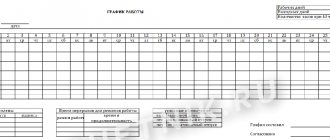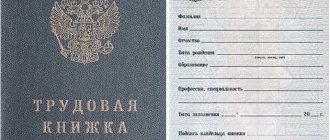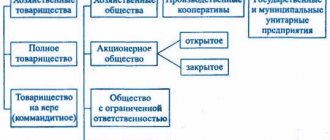When you need an order for personnel
Based on the norms of the Labor Code of the Russian Federation, we can conclude that the employer is obliged to register all personnel issues in its administrative acts and orders:
- hiring (Article 68 of the Labor Code of the Russian Federation);
- transfer to another job or position (Article 62 of the Labor Code of the Russian Federation);
- termination of the employment agreement (Article 84.1 of the Labor Code of the Russian Federation);
- provision of planned leave or recall from leave (Article 116 of the Labor Code of the Russian Federation);
- going on a business trip (Article 166 of the Labor Code of the Russian Federation);
- encouragement or disciplinary action against an employee (Article 193 of the Labor Code of the Russian Federation).
The corresponding orders are the primary accounting documents in the field of labor for the further maintenance of work books, employee cards, and their personal files. Personnel department employees prepare orders, but they are signed exclusively by managers.
How are orders for personnel drawn up?
At one time, officials developed unified forms for personnel documents, including orders. Since 2013, the authorities have abandoned the mandatory use of them. That is, employers are not obliged, but can use the proposed sample orders. All order forms necessary for personnel officers are available in Resolution of the State Statistics Committee of Russia dated January 5, 2004 No. 1. The table indicates the document numbers for further use in work. In parentheses - data on the forms used when issuing one order for several employees.
| Name of the document, order | Form number |
| About hiring | T-1 (T-1a) |
| About transfer to another job | T-5 (T-5a) |
| About granting leave | T-6 (T-6a) |
| On termination of an employment contract | T-8 (T-8a) |
| About sending an employee on a business trip | T-9 (T-9a) |
| About employee incentives | T-11 (T-11a) |
If the organization provides for the preparation of orders according to unified forms, the original details cannot be changed in them, only new ones can be added. For example, expand the lines, clarify information about the persons validating the order. If the local regulations of the enterprise stipulate other samples, then the rules for supplementing them must also be indicated.
An example of an employment order based on a unified form
Sample order for personnel in text format
Personnel orders
Order
– a legal act issued by the head of a management body (enterprise, organization), acting on the basis of unity of command, to solve the main and operational tasks facing this body.
ORDERS FOR PERSONNEL
Orders for personnel
formalize the labor relations between employer and employee, which are regulated by the Labor Code of the Russian Federation. In accordance with part three of the Labor Code of the Russian Federation, which establishes the logic of regulating labor relations, as well as taking into account the significance of management action from the point of view of current legislation and the value of the document, which is expressed in its storage period, orders for personnel are classified quite simply.
First group
– orders formalizing labor relations and essential facts of the implementation of the employee’s labor function (relating to the terms of the employment contract) and having
a shelf life of 75 years :
- about hiring (conclusion of an employment contract);
- on transfer to another job (permanent transfer with the consent of the employee, i.e. changing the employment contract);
- about dismissal (termination of employment contract);
- on the establishment of wages (changes in wages as a change in the essential terms of the employment contract);
- about sending on a business trip (long-term foreign);
- about encouragement (bonus, declaration of gratitude, awarding a valuable gift, certificate of honor, etc.).
It should only be noted that orders for the appointment of the first persons of the enterprise, those officials who are mentioned in the charter (for example, the general director, his deputies, chief accountant, head of the internal control service), are orders for the main activity, and not for personal composition.
The second group is orders that promptly regulate the performance of a labor function by an employee and have a shelf life of 5 years :
- on granting leave;
- about sending on a business trip (short-term);
- on the application of a disciplinary sanction (remark, reprimand, etc.);
- on referral to training (seminar) as part of professional training, retraining and advanced training.
This classification of orders is reflected in the structure of Article 6 of the “List of standard management documents generated in the activities of organizations, indicating storage periods.”
REGISTRATION OF ORDERS
Registration is the transfer of document details into a specific registration form (magazine, book, card index, database) and affixing a number (or index) and date to the document.
All types of orders for personnel must be registered. Registration in journal form provides a good solution for the protection and recording of documents. The last entry shows the total number of registered documents. All registration data is compactly grouped in one or more journals, which are subject to special storage. It is impossible to remove entered data from the journal or register a document retroactively. All these advantages of the journal registration form ensure its use today, despite the presence of new technologies that allow automating the registration of documents.
The obligation to maintain accounting forms in journal form is established by regulatory documents (List of standard management documents generated in the activities of organizations, indicating storage periods; Inter-industry integrated time standards for staffing and accounting work).
has developed convenient journals for recording orders and registering orders
. Depending on the volume of personnel document flow, various types of journals can be used.
- Logbook for registering orders for personnel
- Journal of registration of personnel orders
- Leave order log
- Journal of registration of orders for main activities
- Order log
All registration journals (books)
are carried out until completely filled. On the cover of each registration book, you should write the name of the organization (institution) and put the date of establishment of the journal, and after the book is completely filled out, the end date. If during the maintenance of the journal the name of the organization (or its legal form) changes, then clarifications should be made on the cover of the journal.
More information about the rules for registering orders can be found in the article by L. Sankina “Journals of registration of personnel documentation.”
EXAMPLES OF ORDERS
RECEPTION
- Form T-1. Unified form of admission order
- Form T-1a. Unified form of admission order (several people)
- T-1. Order for permanent employment
- T-1. Order for admission to permanent employment, without testing
- T-1. Order for admission to seasonal work
- T-1. Order for part-time admission
- T-1. An order for admission, temporarily, for the period that another employee is on parental leave
- T-1. Order for acceptance, temporarily, for the period of work
- T-1. Order for admission, urgent, for medical reasons
- T-1. Order of admission, age up to 18 years, shortened working hours
- T-1. Order of admission, part-time
- T-1. Order of admission, part-time work week
- T-1. Order of admission, part-time work
- T-1. Order of acceptance, with full financial responsibility
- T-1. Admission order, manager and deputies, 6 month trial
- T-1a Order for permanent employment (several employees)
- Order on cancellation of an employment contract
TRANSLATION
- Form T-5. Unified form of transfer order
- Form T-5a. Unified transfer order form (several employees)
- T-5a Order for the transfer of several employees (example)
- T-5. Transfer order due to staff reduction
- T-5. Order for transfer due to health reasons
- T-5. Transfer order, promotion
- T-5. Transfer order, temporary, due to work injury
- T-5. Transfer order, temporary due to pregnancy
- T-5. Transfer order, temporarily, until the child reaches one and a half years old
- T-5. Order for transfer based on certification results
- Order on moving an employee to another structural unit
- Order on temporary transfer to another unit
WORKING AND REST TIME
- Form T-6. Unified vacation order form
- Form T-6a. Unified vacation order form (several employees)
- T-6 Order on granting leave (sample)
- T-6a Order on granting leave (several employees) (sample)
- T-6 Order on the provision of maternity leave
- T-6 Order on granting maternity leave to an employee who has adopted a child
- Order on providing an additional day of rest to a donor employee
- Order on postponing employee leave
- Order on replacing part of the vacation with monetary compensation
- Order on replacing additional leave with monetary compensation
- Order on early release of an employee from leave without pay
- Order on the early release of an employee from parental leave
- Order on the extension of an employee’s annual paid leave due to temporary disability
- Order on the release of a donor employee from work on the day of blood donation
- Order on working hours
- Order on establishing reduced working hours
- Order on establishing part-time working hours
- Order on part-time work
- Order on employment at night
- Order on involvement in overtime work (without the employee’s consent)
- Order on involvement in overtime work
- Order on provision of additional rest time
PART-TIME, COMBINATION, ADDITIONAL AMOUNT OF WORK
- Order on combining positions
- Order on the performance of duties of a temporarily absent employee
- Order on increasing the volume of work performed
INCENTIVES AND PENALTIES
- Form T-11. Unified form of order for promotion
- Form T-11a. Unified form of order for promotion (several employees)
- Order on imposing a disciplinary sanction (reprimand)
- Order on removal of an employee from work
BUSINESS TRAVELS, DIRECTION FOR TRAINING
- Form T-9. Unified form of order for sending on a business trip
- Form T-9a. Unified form of order for sending on a business trip (several employees)
- T-9 Order on sending on a business trip (short-term)
- T-9a Order on sending several employees on a business trip (short-term)
- Order on reimbursement to an employee of expenses incurred on a business trip
- Order On sending employees for advanced training (with a break from work)
TERMINATION (Termination of employment contract)
- Form T-8. Unified form of order for termination of an employment contract (dismissal)
- Form T-8a. Unified form of order to terminate an employment contract (several employees)
- T-8 Order On termination (termination) of an employment contract (dismissal) at the initiative of an employee due to the need to care for a child under 14 years of age
- T-8 Order On termination (termination) of an employment contract (dismissal) in connection with the provision by the employee of false documents to the employer when concluding an employment contract
- T-8 Order on termination (termination) of an employment contract (dismissal) in connection with the court recognizing the employee as missing
- T-8 Order on termination (termination) of an employment contract (dismissal) due to unsatisfactory test results
- T-8 Order on termination (termination) of an employment contract (dismissal) due to repeated failure by an employee to fulfill job duties without good reason
- T-8 Order on termination (termination) of an employment contract (dismissal) in connection with a one-time gross violation of labor duties by an employee
- T-8 Order on termination (termination) of an employment contract (dismissal) in connection with the commission of guilty actions by an employee directly servicing monetary assets, giving grounds for loss of confidence in him
- T-8 Order on termination (termination) of an employment contract (dismissal) in connection with the reinstatement of an employee who previously performed this work, by court decision
- T-8 Order On the termination (termination) of an employment contract (dismissal) in connection with the deprivation of an employee of a special right (to drive a vehicle), entailing the impossibility of the employee fulfilling his duties under the employment contract
- T-8 Order on termination (termination) of an employment contract (dismissal) due to violation of the established rules for concluding an employment contract, excluding the possibility of continuing work
- T-8 Order on termination (termination) of an employment contract (dismissal) in connection with the employee’s refusal to transfer to another job, necessary for him in accordance with a medical report
- T-8 Order on termination (termination) of an employment contract (dismissal) in connection with the employee’s conscription for military service
- T-8 Order On termination (termination) of an employment contract (dismissal) in connection with the hiring of an employee for whom this work will be the main one
- T-8 Order on termination (termination) of an employment contract (dismissal) in connection with the commission of an immoral act incompatible with the continuation of work
- Order on reinstatement at work
- Order on cancellation of an employment contract
OTHER PERSONNEL ORDERS
- Order on changing surname
- Order on changing patronymic
Other types of orders for personnel
There are other types of orders for personnel. We give only an approximate list of their enlarged groups:
- hiring, dismissal, transfer belong to the group of organizational orders for personnel;
- disciplinary orders: punishment or reward;
- regulatory: about various types of vacations, about sending on a business trip;
- salary: on the establishment of salaries, a system of bonuses and various additional payments;
- motivating: on the use of bonuses and other additional rewards;
- of a technical nature: to change, clarify or cancel an order if necessary.
Each subsequent group of orders in the list differs from the previous one, but they all regulate the interaction of the employer with the staff of employees, individually with each employee or with their groups.
Example of a disciplinary order
Results
The answer to the question “Orders for personnel - what are these orders?” contains detailed information about the types and forms of these documents, the goals and objectives of their execution, composition, content, as well as the order of numbering, registration and storage.
For information on mandatory personnel documents and personnel records, see the material “Personnel documents that must be in the organization.”
Sources: Labor Code of the Russian Federation
You can find more complete information on the topic in ConsultantPlus. Free trial access to the system for 2 days.
Making changes to an order
Amendments and adjustments to an already officially issued order can be made on the basis of another order. In such an order it is necessary to indicate the reason for the changes, it is necessary to indicate the order to which the changes are made, and the consequences of the changes. It is mandatory for the employee to become familiar with such acts.
Adjustments are most often made as a result of:
- changes in current legislation;
- changes in circumstances that are relevant for the execution of the order, for example, changes in the circumstances of place and time;
- changes in the initial personal circumstances of the employee in respect of whom the administrative act is issued.
Thus, amendments are necessary if circumstances or the legal basis have changed, and in its current form the order is irrelevant and does not achieve the goal set when it was drafted.
Canceling an order
Cancellation of an order regarding personnel is carried out on the basis of a management decision by a separate administrative act. In the order of cancellation, similar to the act of making amendments, it is necessary to indicate the basis for the cancellation and a reference to the order being canceled, subsequent changes in legal relations, and actions that need to be taken. The administrative act must also be made available for review to the employee whose rights and interests it affects.
Cancellation of an administrative act may become necessary due to a change in the initial circumstances under which the original order was adopted. In the activities of business entities, such cases arise quite often.
Most often, the following administrative acts need to be cancelled:
- about hiring;
- on termination of employment relations at the initiative of the employee or employer (for example, if it turns out that the reason for violation of labor duties or labor regulations is valid);
- about sending on a business trip;
- on the provision of the next paid leave;
- on early termination of a disciplinary sanction.
Shelf life
Personnel orders are stored using a specific algorithm. The original is sent to the HR department. Copies:
- one - to the accounting department;
- the second is a personal matter.
Orders for personnel must be formed into files depending on the storage period. To complete the case, you must:
- hem;
- number the sheets;
- create an inventory;
- design the cover.
The shelf life of orders for personnel differs depending on their content and can reach 75 years. The calculation of the storage period begins from 01.01, which follows the year in which the documents were completed for office work. Specific periods for storing administrative documentation are determined by Order of the Ministry of Culture of the Russian Federation dated August 25, 2010 No. 558 in Article 19b.
If any of the species is not on the list, then the storage period is determined by Art. 22.1 125-FZ. The period varies depending on the end date of the paperwork:
- before 01.01.2003 - 75 years;
- after 01/01/2003 - 50 years.
The table shows storage periods by type according to Order No. 558:
| 5 years | 75 years old |
| On bringing an employee to disciplinary liability | About hiring |
| On the removal of disciplinary liability from an employee | On termination of the employment contract |
| About suspension from work | About transfer to another job |
| On termination of suspension from work and permission to work | On combining positions and professions |
| About recall from annual paid leave | About certification |
| On the transfer of annual paid leave | About changing your last name |
| About granting leave related to training | About employee incentives |
| About hiring on weekends and holidays | About remuneration |
| About involvement in overtime work | About employee bonuses |








